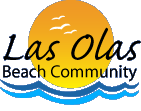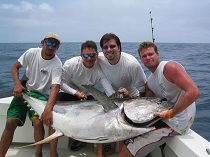Brief History of Costa Rica!
History of Costa Rica
Costa Rica, officially the Republic of Costa Rica Spanish: Costa Rica or República de Costa Rica, pronounced [re pußlikaõe kosta rika]), is a republic in Central America, bordered by Nicaragua to the north, Panama to the east-southeast, the Pacific Ocean to the west and south, and the Caribbean Sea to the east. Costa Rica was the first country in the world to constitutionally abolish its army. Costa Rica is among the safest countries in Latin America and is currently the least impoverished Spanish speaking country in the world, with poverty percentages lower than that of Spain and other developed countries and levels of urbanization that nears those ones of countries such as Finland and Norway. In 2007 the government of Costa Rica said it wants to be the first developing country to become carbon neutral by 2021.
The first European to reach what is now Costa Rica was Christopher Columbus in 1502. [4] In Pre-Columbian times the Indigenous people, in what is now known as Costa Rica, were part of the Intermediate Area located between the Mesoamerican and Andean cultural regions. This has recently been updated to include the influence of the Isthmo-Colombian area.
It was the point where the Mesoamerican and South American native cultures met. The northwest of the country, the Nicoya Peninsula, was the southernmost point of Nahuatl (named after Nitin) cultural influence when the Spanish conquerors (conquistadores) came in the sixteenth century. The central and southern portions of the country had Chibcha influences. However, the indigenous people have influenced modern Costa Rican culture to a relatively small degree, as most of these died from diseases such as small pox and mistreatment by the Spaniards.
During Spanish Colonial times, the principal city in Central America was Guatemala City. Costa Rica's distance from this hub led to difficulty in establishing trade routes and was one of the reasons that Costa Ricans developed in relative isolation and with little oversight from the Spanish Monarchy ( "The Crown"). While this isolation allowed the colony to develop free of intervention by The Crown, it also contributed to its failure to share in the prosperity of the Colonies, making Costa Rica the poorest Spanish Colony in Central America.[6] Costa Rica was described as "the poorest and most miserable Spanish colony in all Americas" by a Spanish governor in 1719.
Another contributing factor to this poverty was lack of indigenous peoples to use for forced labor. While many Spaniards in the other colonies had tribal members to work their land, most of the Costa Rican settlers had to work their own land. For all these reasons, Costa Rica was by and large unappreciated and overlooked by the Crown and left to develop on its own. It is believed that the circumstances during this period led to the formation of many of the idiosyncrasies that Costa Rica has become known for, while at the same time setting the stage for Costa Rica's development as a more egalitarian society than the rest of its neighbors. Costa Rica became a "rural democracy" with no oppressed mestizo or indigenous class. It was not long before Spanish settlers turned to the hills, where they found rich volcanic soil and a climate that was milder than that of the lowlands.
Costa Rica joined other Central American provinces in 1821 in a joint declaration of independence from Spain. After a brief time in the Mexican Empire of Agustín de Iturbide Costa Rica became a state in the Federal Republic of Central America from 1823 to 1839. In 1824 the capital was moved to San José, but due to an intense rivalry with Cartago, violence briefly ensued. Although the newly independent provinces formed a Federation, border disputes broke out among them, adding to the region's turbulent history and conditions.
Costa Rica's membership in the newly formed Federal
Republic of Central America, now free of Spanish rule,
was short lived; in 1838, long after the Central
American Federation ceased to function in practice,
Costa Rica formally withdrew and proclaimed itself
sovereign. The distance from Guatemala City to the
Central Valley of Costa Rica, where most of the
population lived and still lives, was great. The local
population had little allegiance to the government in
Guatemala City, in part because of the history of
isolation during Colonial times. Costa Rica's
disinterest in participating as a
province in a greater Central American government
was one of the deciding factors in the break-up of the
fledgling federation into independent states, which
still exist today. However, all of the Central
American nations still celebrate September 15th as
their independence day, which pertains to the
independence of Central America from
Spain.
Most Afro-Costa Ricans, who constitute about 3% of the country's population, descend from Jamaican immigrants who arrived during the 1880s to work in the construction of railways connecting the urban populations of the Central Plateau to the port of Limón on the Caribbean coast. US convicts and Chinese immigrants also participated in the construction project, conducted by US businessman Minor C. Keith. In exchange for completing the railroad, the Costa Rican government granted Keith large tracts of land and a lease on the train route, which he used to produce bananas and export them to the United States. As a result, bananas came to rival coffee as the principal Costa Rican export, while foreign-owned corporations (including the United Fruit Company) began to hold a major role in the national economy.
Historically, Costa Rica has generally enjoyed greater peace and more consistent political stability compared with many of its fellow Latin American nations. Since the late nineteenth century, however, Costa Rica has experienced two significant periods of violence. In 1917-19, Federico Tinoco Granados ruled as a dictator until he was overthrown and forced into exile. Again in 1948, José Figueres Ferrer led an armed uprising in the wake of a disputed presidential election. With more than 2,000 dead, the resulting 44-day Costa Rica Civil War was the bloodiest event in Costa Rican history during the twentieth-century. Afterwards, the new, victorious government junta, led by the opposition, abolished the military and oversaw the drafting of a new constitution by a democratically-elected assembly. Having enacted these reforms, the regime finally relinquished its power in 8 November of 1949 to the new democratic government. After the coup d'etat, Figueres became a national hero, winning the country's first democratic election under the new constitution in 1953. Since then, Costa Rica has held 12 presidential elections, the latest being in 2006. All of them have been widely regarded by the international community as peaceful, transparent, and relatively smooth transitions.
Geography
Costa Rica is located on the Central American isthmus, 10° North of the equator and 84° West of the Prime Meridian. It borders both the Caribbean Sea (to the east) and the North Pacific Ocean (to the west), with a total of 1,290 kilometers (802 mi) of coastline (212 km / 132 mi on the Caribbean coast and 1,016 km / 631 mi on the Pacific). It is about the size of West Virginia and shares that state's reputation for excellent whitewater kayaking/rafting opportunities.
On the Río Savegre, ust below San Gerardo de Dota in the Talamanca Highlands of Costa Rica.
Two of the country's most renowned rivers in that regard are the Rio Pacuare and the Rio Reventazon located near the city of Turrialba about two hours east of San Jose. Other notable whitewater areas are the Sarapiqui Valley area, several Pacific coast rivers near Quepos, and the southern Pacific drainage area around San Isidro de General.
Costa Rica also borders Nicaragua to the north (309 km / 192 mi of border) and Panama to the south-southeast (639 km / 397 mi of border). In total, Costa Rica comprises 51,100 square kilometers (19,730 sq. mi) plus 589.000 square kilometers of territorial waters.
The highest point in the country is Cerro Chirripó, at 3,810 metres (12,500 ft), and is the fifth highest peak in Central America. The highest volcano in the country is the Irazó Volcano (3,431 m / 11,257 ft). The largest lake in Costa Rica is Lake Arenal
Costa Rica also comprises several islands. Cocos Island stands out because of its distance from continental landmass (24 km² / 9.25 sq mi, 500 km or 300 mi from Puntarenas coast), but Calero Island is the largest island of the country (151.6 km² / 58.5 sq mi).
Costa Rica protects 23% of its national territory within the Protected Areas system. It also possesses the greatest density of species in the world.
Politics
Costa Rica is a democratic republic with a strong constitution. Although there are claims that the country has had more than 115 years of uninterrupted democracy, their presidential election history shows otherwise (see List of Presidents of Costa Rica). Nonetheless, the country has had at least fifty-nine years of uninterrupted democracy, making it one of the most stable countries in the region. Costa Rica has been able to successfully avoid the widespread violence that has plagued most of Central America.
Executive responsibilities are vested in a president, who is the country's center of power. There also are two vice presidents as well as a cabinet designated by the president. The president, vice presidents, and fifty-seven Legislative Assembly delegates are elected for four-year terms. A constitutional amendment approved in 1969 limited presidents and delegates to one term, although delegates were allowed to run again for an Assembly seat after sitting out a term.
In April 2003, the constitutional ban on presidential re-election was reversed, allowing Óscar Arias (Nobel Peace Prize laureate, 1987) to run for President for a second term. In 2006, Óscar Arias was re-elected in a tight and highly contested election, running on a platform of promoting free trade. He took office on May 8, 2006. Autonomous state agencies enjoy considerable operational independence; they include the telecommunications and electrical power monopoly, the nationalized commercial banks, the state insurance monopoly, and the social security agency. Costa Rica has no military by constitution but maintains domestic police forces for internal security. These include the Guardia Civil and the Guardia Rural.
Other current political issues include security, crime, and the limiting of large-scale immigration of people from Nicaragua.
Provinces and cantons
Costa Rica is composed of seven provinces, which in turn are divided into 81 cantons ("cantón" in Spanish, plural "cantones"), each directed by a mayor. Mayors are chosen democratically every four years by each canton's people. There are no provincial legislatures.
Economy
Costa Rica is one of the top tourist destinations in the world and this is one of the main driving forces in the Costa Rican economy. With a $1.9-billion-a-year tourism industry, Costa Rica stands as the most visited nation in the Central American region, with 1.9 million foreign visitors in 2007, thus reaching a rate of foreign tourists per capita of 0,46, one of the highest in the Caribbean Basin. Most of the tourists come from the U.S. (54%) and the E.U. (14%), which translates into a relatively high expenditure per tourist of $1000 per trip. In 2005, tourism contributed with 8,1% of the country's GNP and represented 13,3% of direct and indirect employment. Although there is a general slowdown in the world economy, there is no slow down in Costa Rica. The following information just came out from the ministry of tourism.
Tourism in Costa Rica remains strong despite U.S. economic downturn
Tourism growth continued to be strong in January 2008, despite fears that an economic slowdown in the United States might put a damper on this year. Measured by traffic at the Juan Santamaría and Daniel Oduber Quirós international airports, tourism was up 13.7% over January 2007.
In raw numbers, that's 145,145 tourists that arrived last month at those airports, a figure Tourism Minister Carlos Benavides described as "getting off on the right foot." Visitors to Costa Rica in 2007 increased 11.5% over the previous year's numbers.
Ecotourism is extremely popular with the many tourists visiting the extensive national parks and protected areas around the country. Costa Rica was a pioneer in this type of tourism and the country is recognized as one of the few with real ecotourism. In terms of Travel and Tourism Competitiveness Index, in 2007 Costa Rica reached the 41st place in the world ranking, being the first among Latin American countries. Just considering the subindex measuring human, cultural, and natural resources, Costa Rica ranks in the 20th place at a worldwide level.
Since Costa Rica is a top tourist destination it is also becoming one of the hottest real estate markets in the world for a number of reasons. Many Americans find it more comfortable traveling to Costa Rica to spend their time and money. Costa Rica is one of the safest places in the world and has one of the most stable economies in the world. They have no standing army, which was disbanded in 1948 so you can have no dictator come to power and use the armed forces to keep him in power as is the case in many other dictatorial countries.
Further, the dollar has weakened against the Euro so travel to the European countries has become extremely expensive. However, in Costa Rica, the dollar still goes a long way. I just came back from a trip to the coast and was able to find a room in a rustic motel for $15.00 per night. So the many of millions of tourist that come to Costa Rica many are buying condos or building homes for vacation homes. This is causing Costa Rica to be the hottest real estate market in the world according to a recent MSNBC news segment. Billions of real estate dollars are flowing into the country and this is causing another boom in all the other related businesses, construction, hotels, malls, restaurants, office buildings, supermarkets, telecommunications and the numerous other small businesses that are needed to serve growing communities.
Business Community
The central government offers tax exemptions for those who are willing to invest in the country. Several global high tech corporations have already started developing in the area exporting goods including chip manufacturer Intel, pharmaceutical company GlaxoSmithKline, and consumer products company Procter & Gamble. Trade with South East Asia and Russia has boomed during 2004 and 2005, and the country is expected to obtain full Asia-Pacific Economic Cooperation Forum (APEC) membership by 2007 (the country became an observer in 2004).
For the fiscal year 2005, the country showed a government deficit of 2.1%, internal revenue increased an 18%, and exports increased a 12.8%. Revised economic figures released by the Central Bank indicate that economic growth stood at 5%, nevertheless the country faced high inflation (14%) and a trade deficit of 5.2%.
In recent times electronics, pharmaceuticals, financial outsourcing, software development, and ecotourism have become the prime industries in Costa Rica's economy. High levels of education among its residents make the country an attractive investing location.
The unit of currency is the colón (CRC), which trades around 503 to the U.S. dollar; currently about 756 to the euro. On October 16, 2006, a new currency exchange system was introduced, allowing the value of the CRC colón to float between two bands as done previously by Chile. The idea is that by doing so the Central Bank will be able to better tackle inflation and discourage the use of US dollars. Since that time, the value of the colón against the dollar has stabilized.
Costa Rica's location provides easy access to American markets as it has the same time zone as the central part of the United States and direct ocean access to Europe and Asia. A country wide referendum has approved a free trade agreement with the United States.
Foreign affairs
Costa Rica is an active member of the United Nations and the Organization of American States. The Inter-American Court of Human Rights and the United Nations University of Peace are based in Costa Rica. The Costa Rican State is also a member of many other international organizations related to human rights and democracy.
Costa Rica's main foreign policy objective is to foster human rights and sustainable development as a way to secure stability and growth.
Costa Rica is also a member of the International Criminal Court, without a Bilateral Immunity Agreement of protection for the US-military (as covered under Article 98).
On June 1, 2007, Costa Rica broke ties with the Republic of China in Taiwan, switching to the People's Republic of China in mainland China.
Flora and fauna
Costa Rica is home to a rich variety of plants and animals. While the country has only about 0.1% of the world's landmass, it contains 5% of the world's biodiversity. About 23% of Costa Rica is composed of protected forests and reserves.
One national park that is internationally-renowned among ecologists for its biodiversity (including big cats and tapirs) and where visitors can expect to see an abundance of wildlife is the Corcovado National Park.
The Clay-colored Robin is Costa Rica's national bird.
Tortuguero National Park - the name Tortuguero can be translated as "Full of Turtles" - is home to spider, howler and white-throated Capuchin monkeys, the three-toed sloth, 320 species of birds (including eight species of parrots), a variety of reptiles, but is mostly recognized for the annual nesting of the endangered green turtle and is considered the most important nesting site for this species. Giant leatherback, hawksbill, and loggerhead turtles also nest here.
The Monteverde Cloud Forest Reserve is home to about 2,000 plant species,[28] including numerous orchids. Over four hundred types of birds can be found here, and over one hundred species of mammals.[29] As a whole, around eight hundred species of birds have been identified in Costa Rica. The Instituto Nacional de Biodiversidad (INBIO) is allowed to collect royalties on any biological discoveries of medical importance.
Demographics
According to the CIA World Factbook, Costa Rica has a population of 4,133,884 of which 94% are Mestizo or white, 3% black, 1% Amerindian, 1% Chinese and 1% other. The exact amount, however, is not known because the Costa Rican census combines mestizos and whites in one category. The white population is primarily of Spanish ancestry with significant numbers of Costa Ricans of Italian, German, Jewish and Polish descent. In contrast to its neighboring countries' populations, less mixing of the Spanish settlers and the indigenous populations occurred. Therefore, a vast majority of Costa Ricans are either of Spanish or of mixed mestizo heritage.
Just under 3% of the population is of black African descent. The majority of the afro Costa Ricans are Creole English-speaking descendants of nineteenth century black Jamaican immigrant workers, as well as slaves who were brought during the Atlantic slave trade.
The indigenous or Amerindian population numbers around 1%, or over 41,000 individuals. In the Guanacaste Province a significant portion of the population descends from a bi-racial mix of local Amerindians and Spaniards. There is also an expatriate community of people of all ages from the United States, Canada, Germany, Netherlands, Britain, and other countries, especially in the Central Valley city of Escazú.
Costa Rica hosts many refugees, mainly from Colombia and Nicaragua. As a result, an estimated 10% to 15% of the Costa Rican population is made up of Nicaraguans, most of whom migrate for seasonal work opportunities and then return to their country. There is also a growing number of Peruvian refugees. Moreover, Costa Rica took in many refugees from a range of other Latin American countries fleeing civil wars and dictatorships during the 1970s and 80s - notably from Chile and Argentina, as well as those from El Salvador who fled from guerrillas and government death squads.
Religion
Christianity is the predominant religion in Costa Rica, and Roman Catholicism is the official state religion as guaranteed by the Constitution of 1949. Some 92% of Costa Ricans are Christian and like many other parts of Latin America, Protestant denominations have been experiencing rapid growth. However, three in four Costa Ricans still adhere to Roman Catholicism.
Due to the recent small but continuous immigration of
communities from
Asia, the
Middle East, and other places, other
religions have grown, the most popular being
Buddhism (because of an increasing
Chinese community of 40,000), and smaller numbers
of
Jewish,
Bahá'í and
Hindu adherents.
There is a Jewish synagogue, the B'nei Israel Congregation, in San José, near the La Sabana Metropolitan Park. Several homes in the neighborhood east of La Sabana Metropolitan Park are festooned with the Star of David and other recognizable Jewish symbols.
The Church of Jesus Christ of Latter-day Saints has seen modest growth in Costa Rica in the last 40 years and has built one of only two temples in Central America in the San Antonio de Belen region of Heredia.
Language
The only official language is Spanish. There are two main accents native to Costa Rica, the standard Costa Rican and the Nicoyan. The Nicoyan accent is very similar to the standard Nicaraguan accent due, in part, to its vicinity. A notable Costa Rican pronunciation difference includes a soft initial and double [r] phoneme that is not trilled as is normal in the Spanish speaking world.
Jamaican immigrants in the 19th Century brought with them a dialect of English that has evolved into the Mekatelyu creole dialect.
Marriage
Because Roman Catholicism is the official state religion, only that church's marriages are legally recognized by the government. Any persons wishing to wed outside of the Catholic church must hire a lawyer who will perform and then register their civil wedding for them. Legal age for arriage in Costa Rica is 18, the age of consent is 15.
Costa Ricans often refer to themselves as tico (masculine) or tica (feminine). "Tico" comes from the popular local usage of "tico" and "tica" as diminutive suffixes (e.g., "momentico" instead of "momentito"). The phrase "Pura Vida" (literally "Pure Life") is a ubiquitous motto in Costa Rica. Some youth use mae, a contraction of "maje" (mae means "guy/dude"), to refer to each other, although this might be perceived as insulting to those of an older generation; maje was a synonym for "tonto" (stupid).
Costa Rica boasts a varied history. Costa Rica was the point where the Mesoamerican and South American native cultures met. The northwest of the country, the Nicoya peninsula, was the southernmost point of Nahuatl cultural influence when the Spanish conquerors (conquistadores) came in the sixteenth century. The center and southern portions of the country had Chibcha influences.
The Atlantic coast, meanwhile, was populated with African workers during the seventeenth and eighteenth centuries. Most afro Costa Ricans, however, derive from nineteenth-century Jamaican workers, brought in to work on the construction of railroads between the urban populations of the Central Plateau and the port of Limon on the Caribbean coast. Italian and Chinese immigrants also arrived at this time to work on railroad construction.
Music
Costa Rican popular music genres include: an indigenous calypso scene which is distinct from the more widely-known Trinidadian calypso sound audience that supports nightclubs in cities like San José. American and British rock and roll and pop are popular and common among the youth (especially urban youth) while dance-oriented genres like soca, salsa, merengue, cumbia and Tex-Mex have an appeal as well. Many dances and music of Costa Rica demonstrates an African, pre-Columbian, and Spanish influence. The guitar is a popular instrument especially as an accompaniment to Folk dances.
The literacy rate in Costa Rica is of 96% (CIA World Factbook, February 2007), one of the highest in Latin America. Elementary and high schools are found throughout the country in practically every community. Universal public education is guaranteed in the Constitution. Primary education is obligatory, and both preschool and high school are free. There are both state and private universities.
There are only a few schools in Costa Rica that go beyond the 12th grade. Those schools that finish at 11th grade receive a Costa Rican Bachillerato Diploma accredited by the Costa Rican Ministry of Education.
















